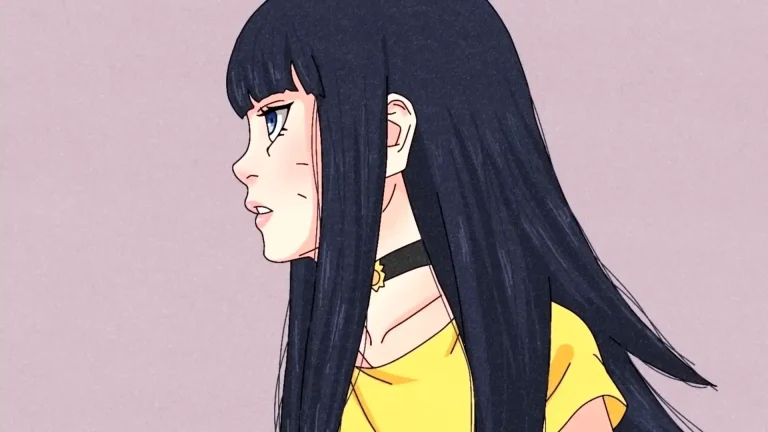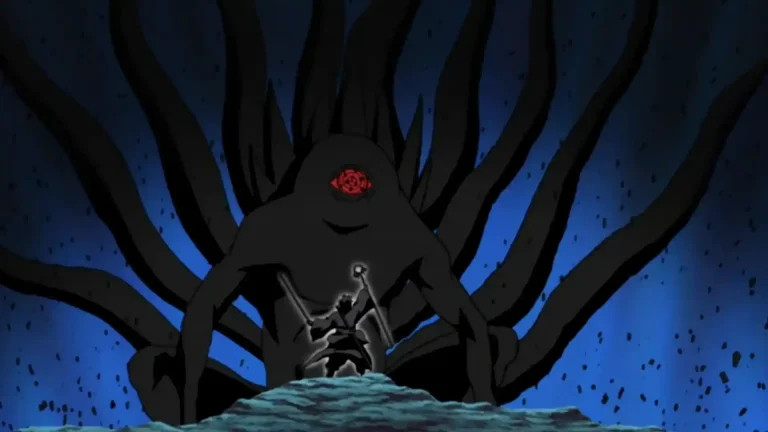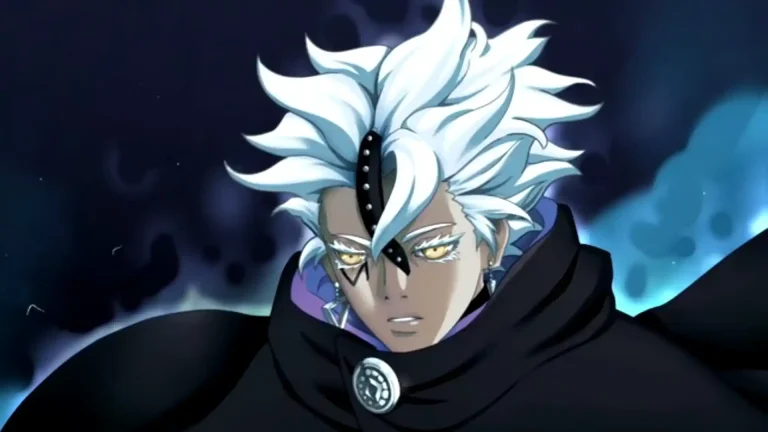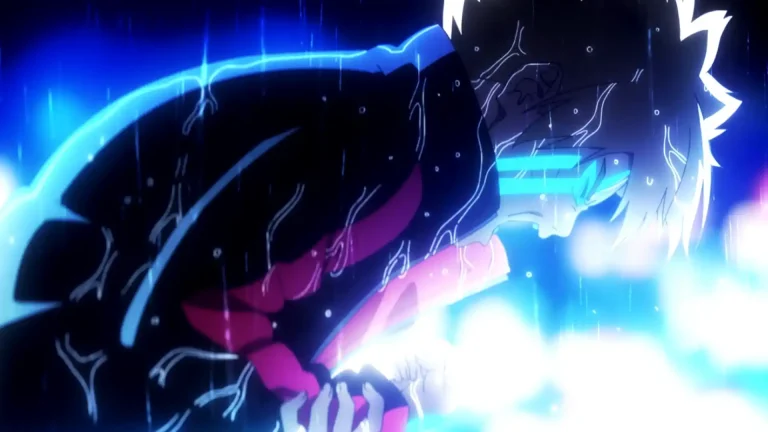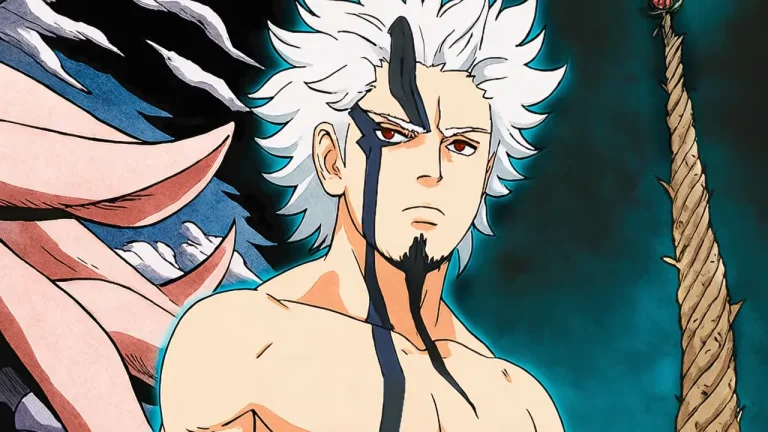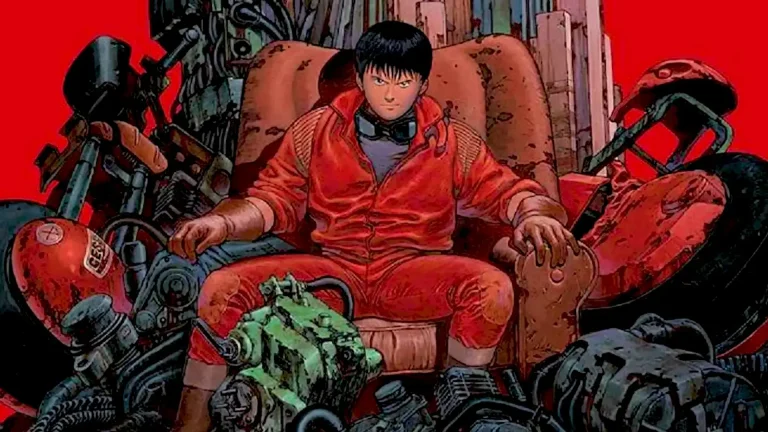The Power of Karma and the Resurrection of Akebi: Amado’s Plan Revealed
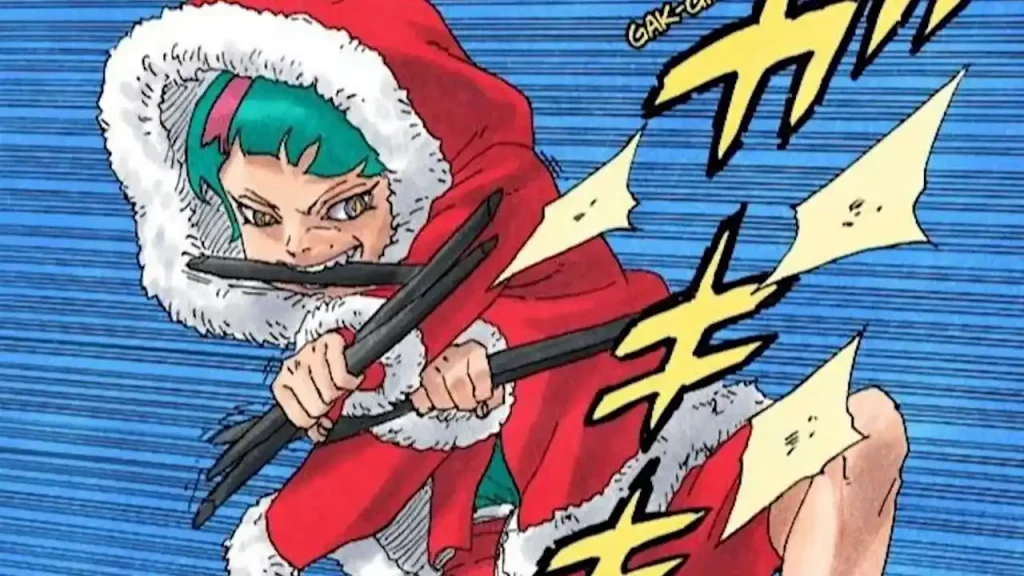
Amado’s Plan to Revive Akebi & The Power of Karma in Boruto Explained
The power of Karma as an Otsutsuki God who evolved by eating the Chakra Fruit allows him to repeatedly undergo karmic awakening, eventually making him immortal and incapable of dying. In the previous chapter of Boruto: Two Blue Vortex, Amado explained in detail to Naruto about Daemon and Eida and why they possess abilities like those. This is where everything gets revealed.
Naruto was initially curious about how Amado created them, but Amado confirmed that they were not his creations. In other words, Shinjutsu and abilities beyond reason did not originate from his inventions. Instead, such crazy abilities and powers can only be possessed by gods. Amado said that he merely transplanted existing skills. An ability only possessed by gods or something that has truly evolved into a god-like being is called Otsutsuki Shibai.
Although they were shocked to hear the name Otsutsuki Shibai, Amado explained that Shibai was no longer with them—only his remains existed. The Chakra Fruit is a manifestation formed from a collection of chakras that absorbs all life on a planet. As an Otsutsuki, to avoid death, Shibai evolved by eating the Chakra Fruit, reincarnating repeatedly until his goal of preventing death was achieved.
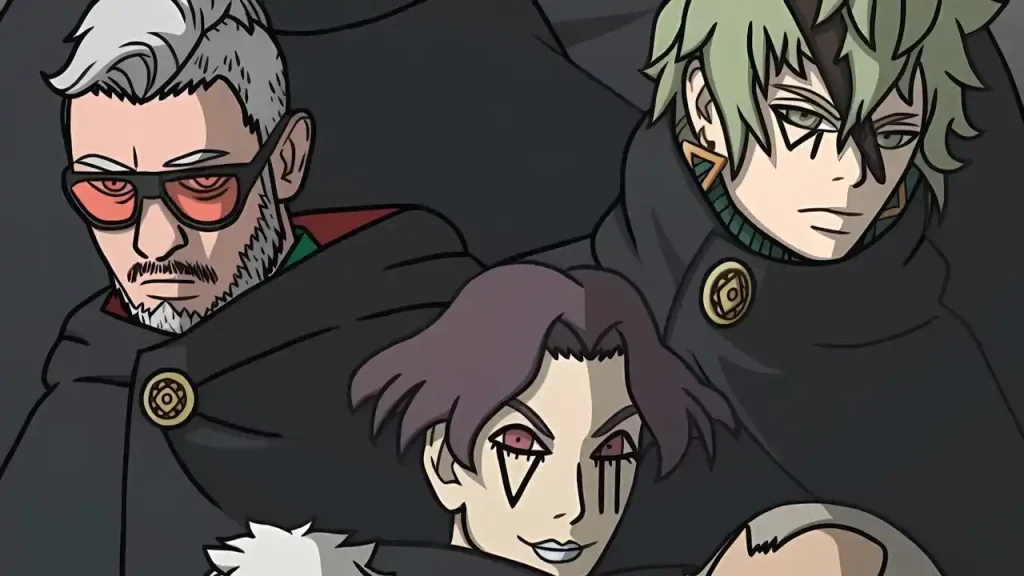
If Shibai consumed the fruit over millennia, he would continue evolving until reaching a status equivalent to a god. However, Amado’s human creations, like Eida and Daemon, have Otsutsuki Shibai’s cells embedded in their bodies. As owners of Shinjutsu and divine abilities, they inherited some of the powers of Otsutsuki Shibai. Although not equal in power, these abilities are terrifying. For example, Daemon’s ability to reflect all attacks, including his ability to capture the black rod of Sukuna Hikona (which Isshiki passed down to Kawaki), demonstrates this. If Shibai possessed this power, it would be 10 times more powerful.
That’s what a god is like, right? Because it all sounds so absurd, Shikamaru responded with doubt. However, Naruto still wanted to hear more about Shibai Otsutsuki. Amado then explained something even more astonishing: as a god, Shibai could create storms just by waving his hand and summon lightning just by shouting in anger—all without using the ninjutsu seal marks. In essence, these god-like abilities are not ninjutsu but rather Shinjutsu.
Many of the abilities they’ve encountered recently are part of Shinjutsu: Code’s ability to use claw marks, Eida’s manipulation of thoughts, Daemon’s reflection of attacks, and Kawaki’s inherited Isshiki abilities, like Sukuna Hikona and Daikokuten. All of these abilities belong to Otsutsuki Shibai.
As another example, consider what Momoshiki did to Borutoby, leaving his Karma—this, too, is part of the reincarnation performed by Otsutsuki Shibai through Karma, which can be called the Art of Immortality. One exciting moment in this conversation came when Shikamaru asked an excellent question: if reincarnation allowed Otsutsuki Shibai to live forever, why did Amado claim Shibai had died, leaving only his remains for Amado to use in cyborgs?
Shikamaru’s question was valid; theoretically, Shibai should still be alive if he continued to reincarnate. Amado admitted that he did not know for sure what happened to Shibai, and he even speculated that Shibai might have been killed. However, Amado also suggested that as a god, Shibai might have transcended into a higher dimension, rendering the need for a physical body obsolete. Shibai no longer needed reincarnation or a vessel to achieve the final level of evolution.
In other words, Amado’s hypothesis is reasonable: by reaching a higher dimension, Shibai may no longer have needed his body, which explains why Amado found and used it. This also clarifies Amado’s previous decision to implant Karma into Kawaki again, without his permission, as part of Otsutsuki’s plan.
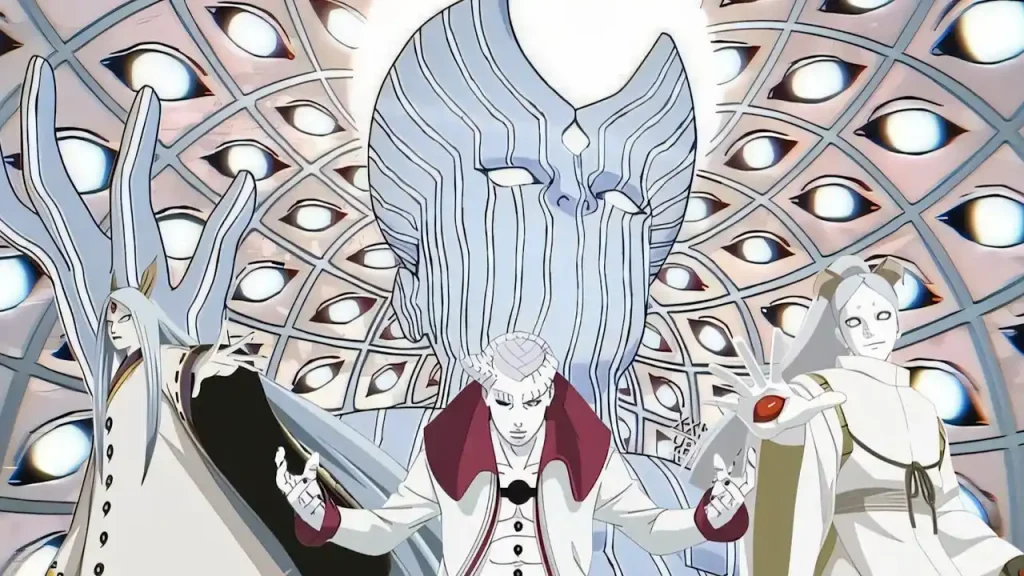
Amado hopes that a seemingly impossible power and ability can become something possible. An example is resurrecting the dead. Amado mentions that he wants to bring his dead daughter back to life. However, before he could continue, Delta suddenly arrived to meet Eida. Even though Sarada tried to stop Delta from coming to the location, Delta begged Sarada not to tell Shikamaru because she wanted to meet Eida. Ultimately, Delta continued to insist and pray for a meeting with Eida.
Sumire, who had just arrived, immediately deactivated Delta’s consciousness by saying, “Delta, time to go to sleep,” an emergency code implanted in Delta’s body to control her. Sumire explains that Delta should not be able to go against her or Katasuke’s orders. From this, it is clear that Eida’s ability is so powerful that it can even disrupt the program that controls Delta, making her go out of control. Once again, this highlights Eida’s insane divine ability.
Returning to Amado’s conversation about his desire to restore his daughter’s life, he revealed that this event occurred 12 years ago, the day Boruto was born. Akebi is the name of Amado’s daughter, who suffered from a terrible disease. Amado mentioned that there was no effective cure or antidote for the disease. Even the doctors treating her gave up due to the disease’s fatal nature. Though the cause of the disease remained unknown, Amado believed he could find a solution.
In a laboratory in Kara, Amado made a new body for Akebi. Despite the frustrating situation, Amado dismissed concerns about values and ethics. Creating a new body sounded more reasonable to him than fixing a defective one. As a scientist, this was something he had mastered. Making a new body was more accessible than curing Akebi’s defective body.
At the time of Akebi’s death, Amado did not feel sadness. With his abilities and wits, he attempted something extreme—he preserved some parts of Akebi’s dead body and digitized portions of her memory. A girl was created nine months after Akebi’s death. This girl had the same voice, appearance, and memories as Akebi, but she was a stranger—the girl we now know as Delta.
With a desperate face and increasing frustration, Amado realized that while Delta had Akebi’s memories, she was not Akebi. He finally admitted that resurrection was not within his domain. With a deep sense of sadness and disappointment, Amado came to terms with the fact that his daughter was truly gone.
When Amado was at his lowest, he met Jigen, who promised that if he helped, Amado would be reunited with his daughter. In other words, if Jigen’s goal were achieved, he would bring Akebi back to life. Hearing that the reward would be his daughter’s life, Amado decided to cooperate with Kara and help Jigen’s goal of creating the Chakra Fruit. However, blinded by the promise of his daughter’s resurrection, Amado failed to realize that Jigen’s plan would ultimately sacrifice the lives of the planet’s inhabitants.
In the end, Amado realized that his mission was futile. If he had helped Jigen, it would have meant nothing to get his daughter back if the planet had ceased to exist. Although it seemed like Amado gave up on bringing Akebi back to life, he admitted that he hadn’t given up entirely. Initially, Jigen didn’t explain how he intended to resurrect Akebi, but when Amado relented and analyzed Isshiki’s methods and the mechanism of Karmic Resurrection, he saw a possible solution.
According to Amado’s analysis, what Isshiki did through his vessel and Amado’s method to create Akebi through cloning were almost the same. In conclusion, Amado’s original purpose in re-implanting Karma into Kawaki’s body without his permission was to protect Naruto and serve Amado’s personal goal. By adding Akebi’s data to Kawaki’s reconstructed Karma, all Kawaki would have to do is implant Karma into a new clone body that Amado would prepare, and with that, Akebi could be revived.
Amado expresses his gratitude to Kawaki, acknowledging that since childhood, Kawaki had been used as Jigen’s vessel. Beyond the torture Kawaki endured with Jigen, it’s a fact that he is now obsessed with Naruto, who treated him so well. Kawaki is willing to sacrifice everything to protect Naruto, even if it means killing Boruto, because of Momoshiki inside Boruto’s body. Kawaki’s way is not entirely wrong, but it’s not entirely correct either.
After everything Amado revealed, including using Kawaki for his purposes to revive his daughter, Shikamaru still doubted Amado’s story. He even asked Eida to use her Senrigan to verify whether Amado had a daughter. Although this request sounded cruel, it was part of Shikamaru’s job. In Boruto: Two Blue Vortex, Amado reveals his plan to revive his deceased daughter, Akebi, using Kawaki’s Karma. By implanting Akebi’s data into a new body through Kawaki’s reconstructed Karma, he aims to achieve the impossible. This quest raises ethical concerns and highlights the dangers of Otsutsuki ambition. As Shikamaru questions Amado’s motives, the story deepens its exploration of power, sacrifice, and the potential consequences of playing god in a world filled with divine abilities

